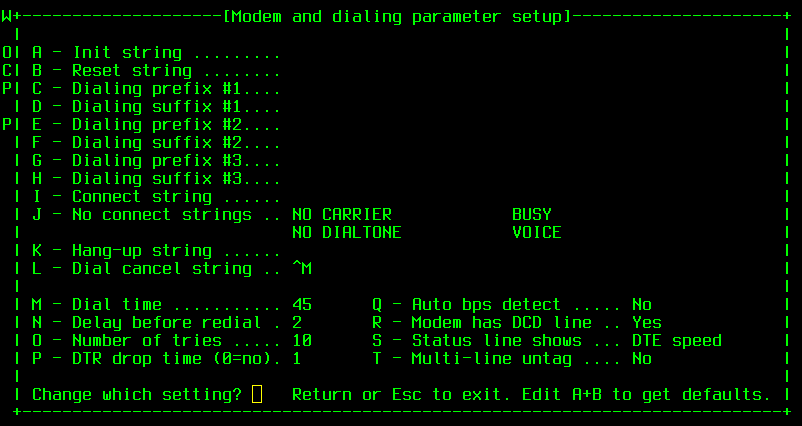

Now you can connect to the pico in exactly the same way as a Linux user would, for example. If you have a Touch Bar Mac, this will add a new option which toggles the Option key between “meta key” and normal behaviour. Head into the settings of Terminal.app and enable the meta key option. For the first example, well run ehbasic.bin, which is an Enhanced BASIC, an old-school. (Optional: Skip this bit if you’re happy using the escape key) Step Two - Start Minicom and upload Enhanced Basic to your roscom68k.

Note that it is unimportant if the device was connected before or after configuration.
#Minicom example serial
Once the Dragon12 is connected to the serial port, press the reset button on the board. Is there a auto test facility in minicom,where after establishing the connection i can run a script Something like this Use C-Kermit, which is fully scriptable, instead of minicom. However, it’s also to possible to use the Option key instead if you’d prefer. Minicom is now listening to the serial port (/dev/ttyUSB0 is the serial device is in this example). i am using eUploader in windows and there is a auto test facility where we can run scripts. By deafult on a Mac, this is the “esc” key. Minicom uses a “meta” key for some keyboard functions. Now that you have minicom installed, there’s one more thing to be aware of. If you don’t already use homebrew, head over to brew.sh to learn about the project and get it installed first.
#Minicom example install
If you already use the MacOS package manager “homebrew”, open up Terminal.app and run brew install minicom.
#Minicom example mac
Well, help is at hand! The Linux section of the docs suggest using the open-source tool, minicom, and Mac users can use that too. The docs suggest the aptly named “ Serial” which looks great, but is not cheap.īeing a frugal hacker, you might prefer to use an open source tool instead. Start minicom as root to setup the global configuration. Ask your sysadm to create one (with minicom -s). Minicom is a tool for serial debugging over Linux environment. The first thing you will need to do is setup a global configuration file for minicom.
#Minicom example Pc
If you are having trouble, for example if you can only receive data from the device but can't send data, then try changing the Hardware Flow Control option to No.If you’ve read the official documentation for the Pico Python SDK, you’ll have seen that in order to connect your Mac to the python REPL running on the Pico you need a serial interface program. We supposed that you have a USB to serial module (also is embedded in Pioneer600) and attach it to your PC for serial communication.

If not installed use the following command: Below example sends help every 2 seconds and lasts 20 seconds, it expects kann> in the response to help command and print whatever characters before. Example: Set serial port /dev/ttyS0 baud rate to 57600 and odd parity.


 0 kommentar(er)
0 kommentar(er)
